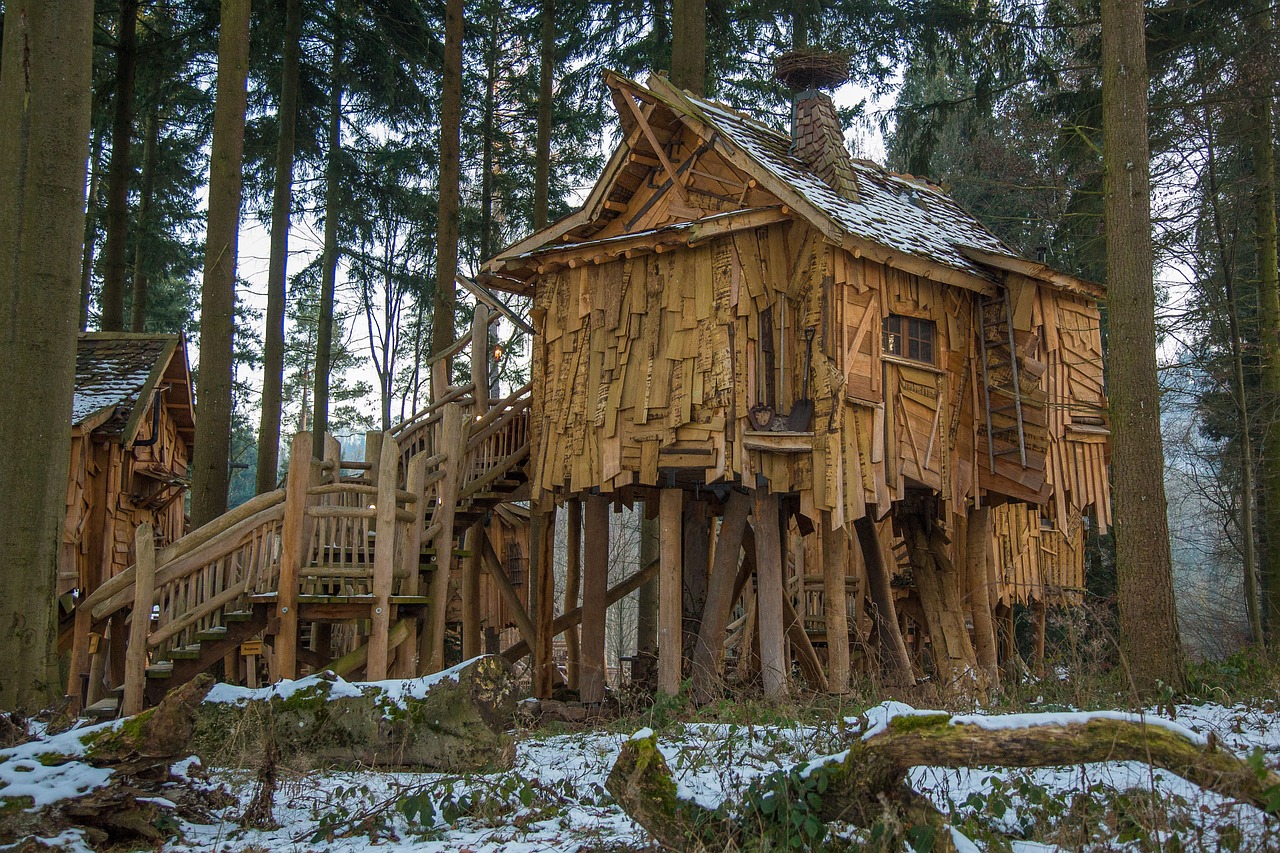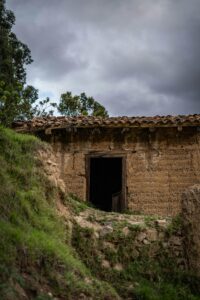Treehouses are a more complicated endeavor than the other bushcraft camping shelters covered in this series. Lifting materials over your head or climbing a ladder with them presents challenges to strength and safety. Also, with a ground dwelling, you only have to worry about a poorly-designed roof falling in on you; with a treehouse, you have to worry about the entire structure collapsing and causing you to fall several feet or more, which greatly increases your chance of being seriously injured.
There are times and places, however, where treehouses or houses on stilts provide enough benefit to outweigh the added complexity and safety issues. For instance, if you are in an area with a lot of predators, like grizzlies, sleeping and storing food up in the air is much safer than being at ground level. Also, if the only land you can use is boggy or prone to flooding, then the only habitable and safe space is going to be in the air. Lastly, if you need to stay at a friend or relative’s place, but they don’t really have room for you in their house (or you want privacy), a treehouse may be an allowable structure under their local codes or HOA rules, so you can essentially stealth camp in what’s treated as a child’s playhouse.
This treehouse, built with commercial-grade lumber, works in any backyard that has a tree sturdy enough to support it. It does take the labor of two men to build it, but one person might be able to manage if it was not so high off the ground. This video also shows how much easier life is if you have scaffolding to work from. (My mother has a single-level scaffold and we used it to put decorative tiles on her cathedral ceilings. While I’m normally afraid of going up on ladders, I didn’t mind being on the scaffold because it was sturdy and allowed me to move freely without worry of falling off. So I have to say I recommend it if you can afford it.)
(This channel also has a more detailed, step-by-step series of videos if you’re looking for more information.)
While not built around a tree, this house on stilts accomplishes much of the same objectives and may be easier to assemble than a house built around a tree. (This design also eliminates the wasted space cause by a tree in the middle of your house.)
This father and son team built what’s basically a two-story bushcraft treehouse with a sleeping shelter up top and a storage area underneath. While this is a very rough camping shelter, it could be built to be usable for a longer period of time.
This video shows the completed project, but it’s just one video in a series showing how they built it. Other than some necessary hand tools, the only cost they seem to have incurred for the project is the cost of some paracord and the tarps for the roof.
This bushcraft treehouse is built like the previous one using 4 nearly equidistant trees, but instead of a tent-shaped bunk space, it is a full-blown cabin. While not nearly as easily camouflaged as the previous option, it is much more comfortable to live in. And it shows how you can combine any wood cabin you like with trees or stilts.
I saw several examples of this three-tree, triangle style treehouse online, so this is a legit option if you don’t have a single tree large enough to bear your cabin, or four trees of size close enough together to build a cabin like in the previous videos.
This example is the most elaborate, with two levels for sleeping and living. This seems like a lot more work to me, but it’s going to depend on the spacing of your trees. If the only trees you can use are too close together for adequate floor space, then make like NYC and build up.
This video also shows cooking over a fire on the floor of the treehouse. Even using a dirt mound for the fire’s base, I find this to be highly questionable, but I saw someone else with a fire on their treehouse platform, so it must be legit. (Or maybe no one films their treehouse burning down.) If it were me, I would only do this in something like a portable fire pit.
This treehouse uses a combination of stilts and a broken-off stump of a tree for its support. It also makes good use of a steep hillside so that one side of the treehouse is not too far off the ground, making it easier to work on. (Although not ideal if you’re in bear country, because it’s not out of reach.) While it is technically a bushcraft shelter, as it uses only things you find in the bush—not commercial-grade lumber—like a log cabin, it does involve a certain amount of carpentry, so it might not be a good project for a beginner. (Or that might make it the perfect project to learn on, because if you mess something up, you only have to walk a few feet away to get another free log.)
This is so crazy, I’m at a loss for words, so I will just present it as-is. I will say this for it, though: it’s definitely out-of-the-box thinking.
Are you in need of a bushcraft shelter, but putting one in the air is not feasible? Then check out more options here: From Camping to Home: Bushcraft Shelters as Temporary Housing

